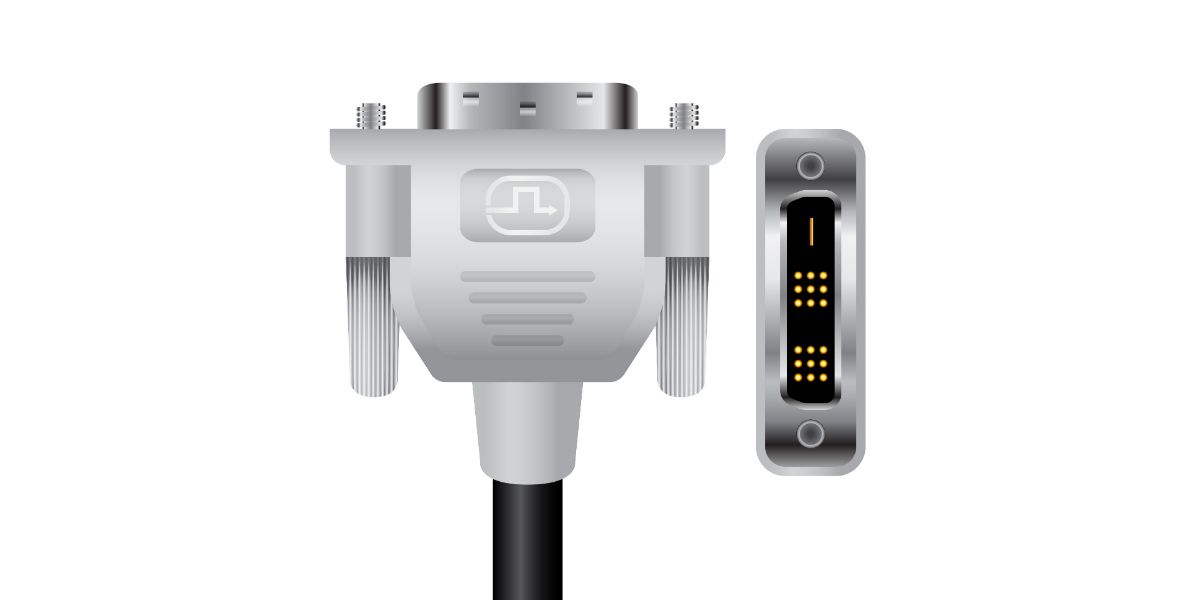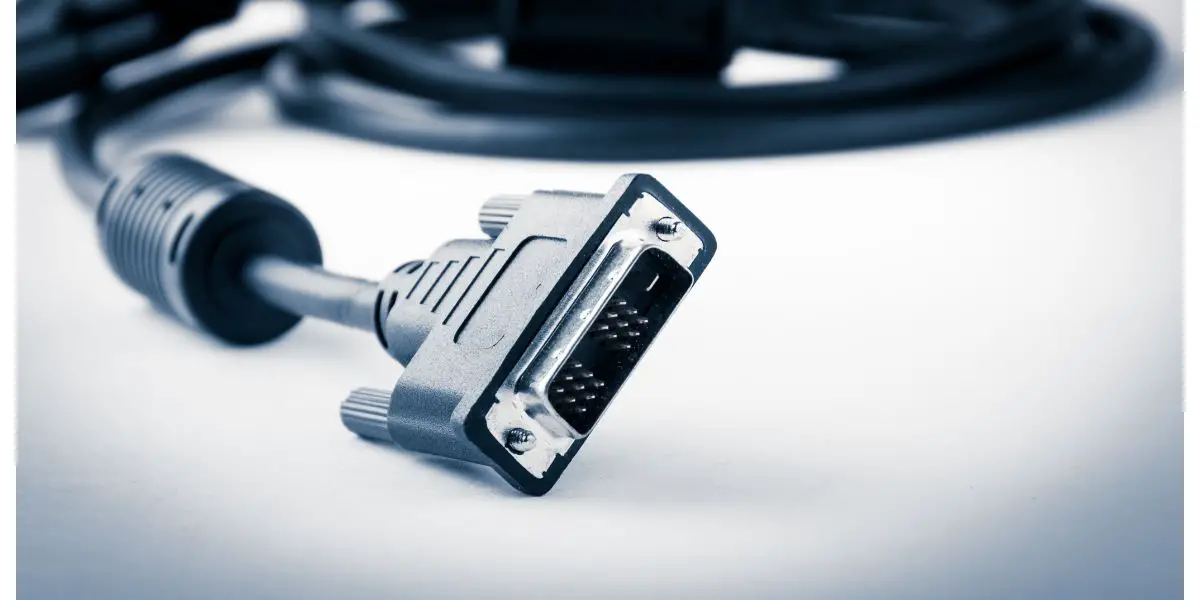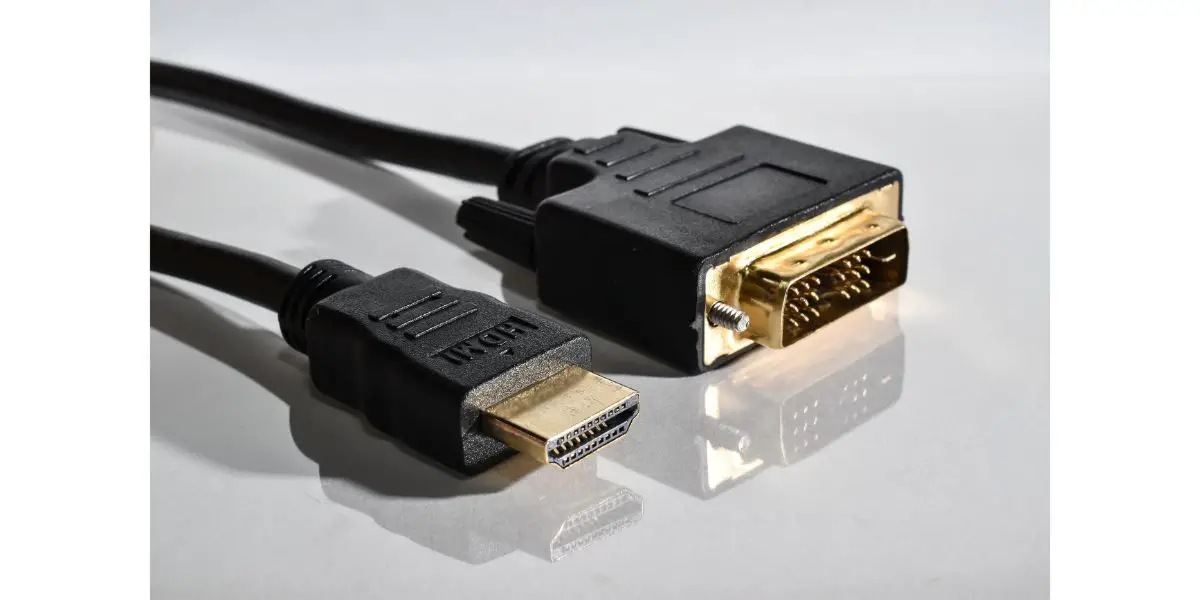Disclaimer: This post may contain affiliate links, meaning we get a small commission if you make a purchase through our links, at no cost to you. For more information, please visit our Disclaimer Page.
Nowadays, when you’re connecting an input and an output device, you probably will have to deal with HDMI cables for audio and video signals. However, some older devices have different ports that are incompatible with these cables. DVI cables, for instance, are used to transmit video signals just like HDMI cables, but they have a unique shape and additional screws.
Table of Contents
The Purpose of Screws on DVI Cables
Digital Visual Interface (DVI) is a digital interface that allows you to transmit video signals between devices using a cable. DVI can transmit both digital and analog signals, unlike the older VGA, which only transmits analog signals.
DVI cables used to be pretty common years ago, but have taken a backseat to HDMI cables lately. However, you can still find DVI ports in several different desktop monitors, projectors, and more. Unlike HDMI, DVI cables have two screws on both sides of the cable head, which correspond to two holes in the port.
The purpose of these screws is to make sure that the connection is completely secure. The head of the DVI cable has a large connector compared to HDMI cables, which can be plugged in as it is, but it is heavy and is not secure without using the screws.
The screws on the side of the connector are made to perfectly fit in the holes on the side of the DVI port. To secure them, you’re supposed to plug the cable first in the correct port, ensuring it is well attached, and then keep it in place using the screws. You should rotate each screw clockwise to tighten it.
Why Is It Important To Keep the Connection Tightly Secured?
The reason why it’s so important to plug DVI cables well is that they can transmit both digital and analog signals. Digital signals are not affected by the way the cable is connected; the signal either exists or doesn’t.
However, analog signals can be stronger or weaker, depending on how the cable is plugged in. The tighter the cable is screwed in, the better the analog signal will be. As a result, DVI cable manufacturers make sure that these connectors can be plugged in well.
What Happens if I Don’t Use the Screws?
As I explained above, screws are important components of DVI cables and are supposed to be tightened whenever you plug one in, to make the connection secure. However, you may consider this a waste of time and plug in the connector without doing anything else; is this safe?
Generally speaking, you may have no problem using a DVI cable if you connect it without tightening the screws, as long as you don’t move the cable. The head can stick to the port by itself, even without the help of the screws. However, any small movement could cause the cable to unplug.
Many people choose not to use the screws when they don’t have time, and generally, they don’t encounter issues. However, if you constantly work near the back of your device, you could likely move the DVI cable and unplug it accidentally, so you should make sure to use the screws.
What Does a DVI Cable Look Like?
To have a better idea of what the screws achieve and how you can use them, you need to know what a DVI cable looks like. You probably have seen one, or a DVI port at some point, but you may not have realized it yet.
A DVI cable has two molded heads at each end, corresponding to the DVI ports on the input and output devices. Each head of the DVI cable has a metal-plated, D-shaped male connector that contains several pins. The D shape means that there is only one correct way of plugging the cable.
On both sides of the connectors, you can see two screws, which can be controlled using round knobs behind the head. The heads are slightly different on each end since the ports are different; while they are similar the connectors may have a different number of pins and various shapes.
What Are DVI Cables Used For?
As mentioned above, DVI cables transmit analog and digital video signals from an input device to an output device. For instance, you can use DVI cables to connect an input device, like a camera or a computer, to an output one, like your monitor or a projector.
DVIs were developed in the late 1990s and were quite popular in the 2000s because they offered more advantages than other options. Nowadays, you can still find many devices that provide you the option of using DVI cables.
However, considering the success and advances of HDMI cables, it’s safe to say that DVI will no longer be as popular, and may soon disappear from most devices.
There are still uses for DVI cables, because they are similar to their VGA predecessors and their HDMI successors in many ways, and offer certain advantages compared to both of them.
What Other Cables Have Screws?
DVI cables are not the only ones to have screws that secure them better. Their predecessors, Video Graphics Array (VGA) cables have a similar structure and components, including the screws. You may often mistake one type for another at first sight.
VGA cables were developed in the 80s and were quite popular for a couple of decades. Like DVI cables, they were mainly used to connect computers to monitors or projectors, transmitting video signals. Nowadays, you may still find some VGA ports on certain computers or monitors, but at this point, they are becoming obsolete.
VGA and DVI cables are similar because they are made for the same purpose and they can transmit analog video signals. However, DVI cables can transmit digital signals, which is impossible for VGA.
The fact that VGA cables only work with analog signals also explains why they also need screws to tighten the connection; the analog signals can be stronger if the connection is more secure.
DVI vs. HDMI Cables
Having compared DVI cables to their predecessors, you can understand their advantages and the reason why they have certain components such as the screws. However, you may also need to compare DVI cables to their successors, the HDMI cables to understand more about their disadvantages.
HDMI cables were developed shortly after DVI ones in the early 2000s. They started to gain popularity quickly and have now become the primary way of connecting devices and transmitting audio and video signals. There are different generations of HDMI cables, so the ones you use right now are somewhat different from the original ones developed in 2000.
Here are some crucial differences between DVI and HDMI connectors:
- HDMI connectors can be plugged in without the need for screws.
- HDMI cables transmit both audio and video signals, while DVI can only transmit video signals.
- HDMI supports Full HD image quality, while DVI may not be able to.
- DVI is still the default in most computer monitors, but it may be overtaken by HDMI soon, which is the default on TVs and streaming devices.
- DVI supports digital and analog signals, while HDMI can only work with digital ones.
- HDMI connectors are more expensive than DVI ones.
Conclusion
DVI cables have been a staple for the last few decades for connecting devices and transmitting video signals. They require screws in order to connect properly, because the nature of the cable requires more support, but also because they transmit analog signals, the strength of which depends on how tight the connection is.



